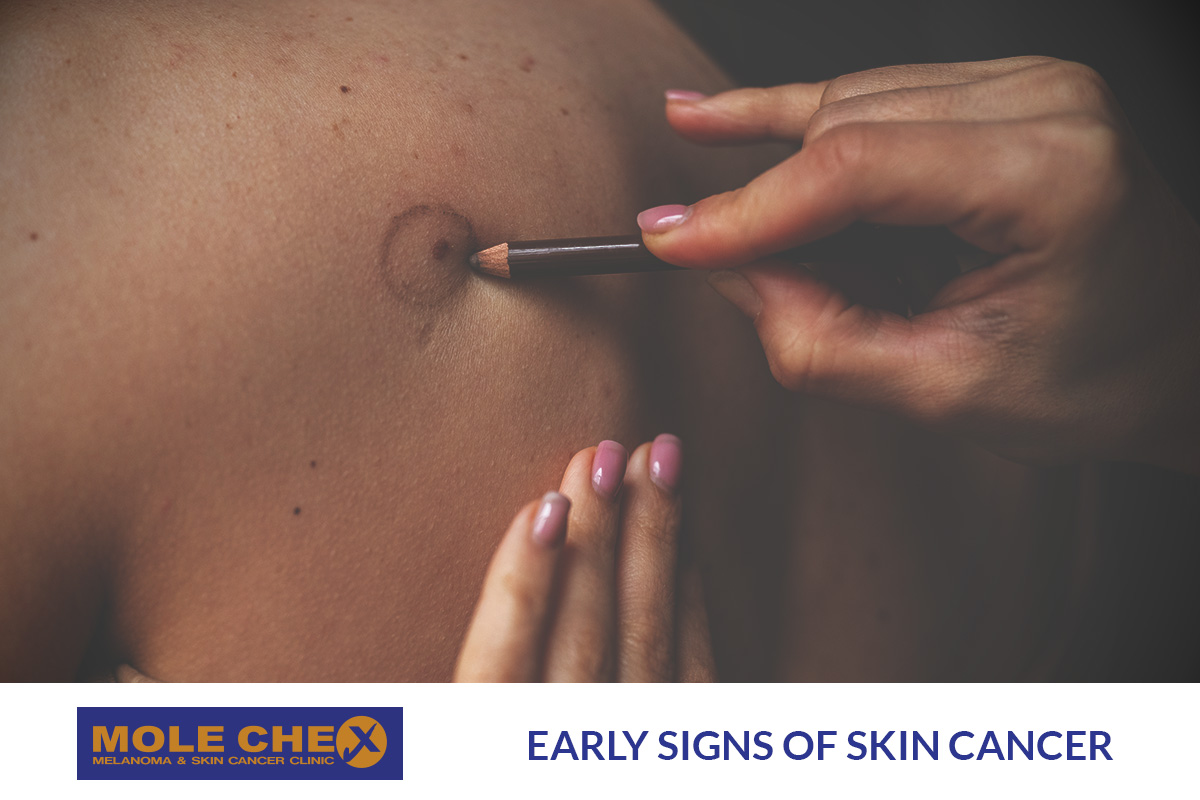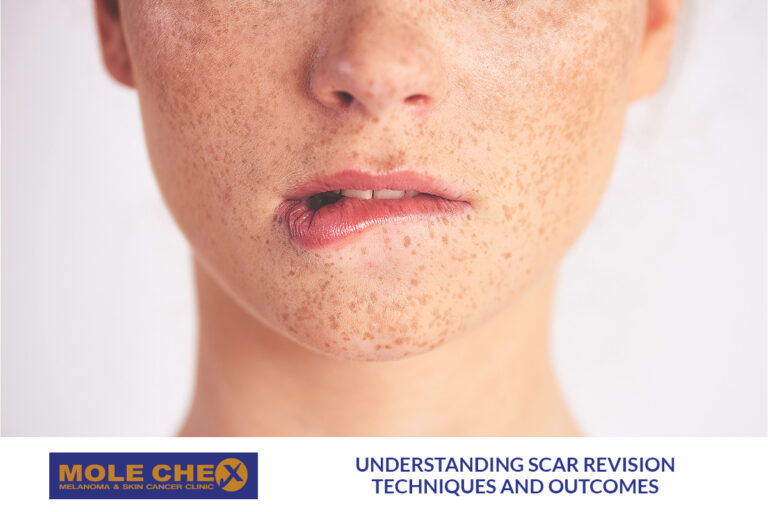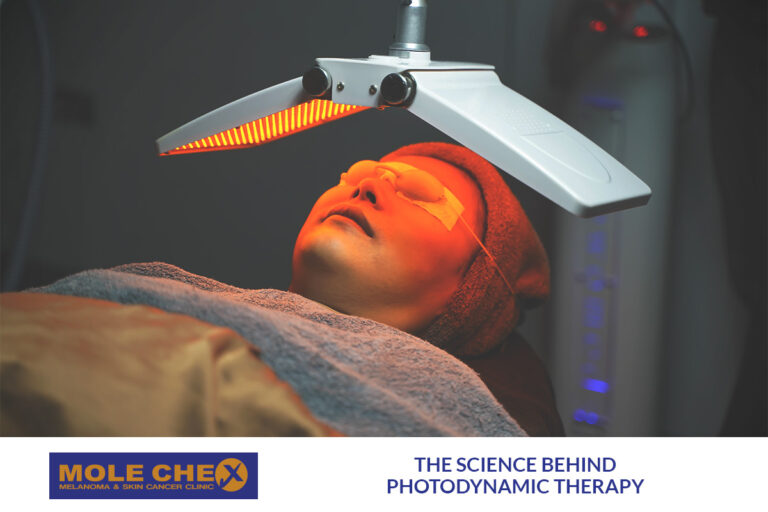Skin Cancer Early Signs : What to Look Out For

Skin cancer is one of the most common forms of cancer globally, and its prevalence continues to rise. Early detection is crucial in effectively treating skin cancer. Being aware of the early signs and knowing what to look for can make a significant difference in outcomes. Before diving into the signs, it’s important to understand what it is. Skin cancer occurs when mutations develop in the DNA of skin cells, primarily due to ultraviolet (UV) radiation from the sun or tanning beds. These mutations cause cells to grow uncontrollably and form a mass of cancer cells.
Australia’s sun-kissed landscapes come with a caveat – a higher risk of skin cancer. Knowing the early signs can be your shield against potential harm. Let’s explore the crucial indicators and why early detection is your best defense, dive into the world of early signs of skin cancer every Aussie should recognize
The ABCDEs of Melanoma
Understanding melanoma, the deadliest form of skin cancer, revolves around the ABCDE criteria:
- A for Asymmetry: Melanomas are often unevenly shaped.
- B for Border: Irregular or jagged edges are red flags.
- C for Color: Multiple colors or uneven distribution are concerning.
- D for Diameter: Melanomas are typically larger than a pencil eraser.
- E for Evolving: Any changes in size, shape, or color should be monitored.
Non-Melanoma Warning Signs
While melanoma is a severe concern, non-melanoma skin cancers like basal cell carcinoma (BCC) and squamous cell carcinoma (SCC) have their own indicators:
- Persistent Sores: Non-healing sores that bleed or ooze.
- Changes in Moles: Evolution in size, shape, or color.
- Red or Scaly Patches: May signal SCC.
- Bumps or Nodules: Elevated, shiny, or translucent lumps.
High-Risk Areas
Certain areas are more susceptible to skin problems than other, demanding extra attention:
- Face and Neck: Frequent sun exposure.
- Back and Shoulders: Common sites for melanoma.
- Legs: Often neglected but prone to sun damage.
- Under Nails and Palms: Hidden areas needing scrutiny.
Importance of Regular Skin Checks
While understanding these signs is important, prevention should not be overlooked. Regular use of sunscreen, wearing protective clothing, and avoiding peak sun hours are key strategies in prevention. Additionally, regular skin exams by a healthcare professional and self-exams are crucial in early detection.
Emphasize the significance of routine skin examinations, whether self-checks at home or professional screenings. Early detection can significantly improve treatment outcomes. Remember that more than 90% of skin cancers are treatable if detected at early stages. Your skin doctor can help distinguish form different skin spots and help in case of cancerous spot.
Seeking Professional Help
If you notice any changes in your skin that concern you, don’t wait. Consult a healthcare professional immediately. Early detection and treatment are vital for a successful outcome in the fight against skin cancer.
Encourage readers not to ignore suspicious changes. A skin doctor’s expertise is invaluable in accurate diagnosis and prompt intervention. Conclusion: Empower yourself with knowledge – recognizing early signs of skin problem is a proactive step towards a sun-safe and healthy life. Regular checks, sun protection, and timely consultations with professionals are your allies in this journey.
Remember, when in doubt, get it checked out! Your skin’s well-being is an investment in a sunlit future.
Are you interested in reading more? Read other articles :



